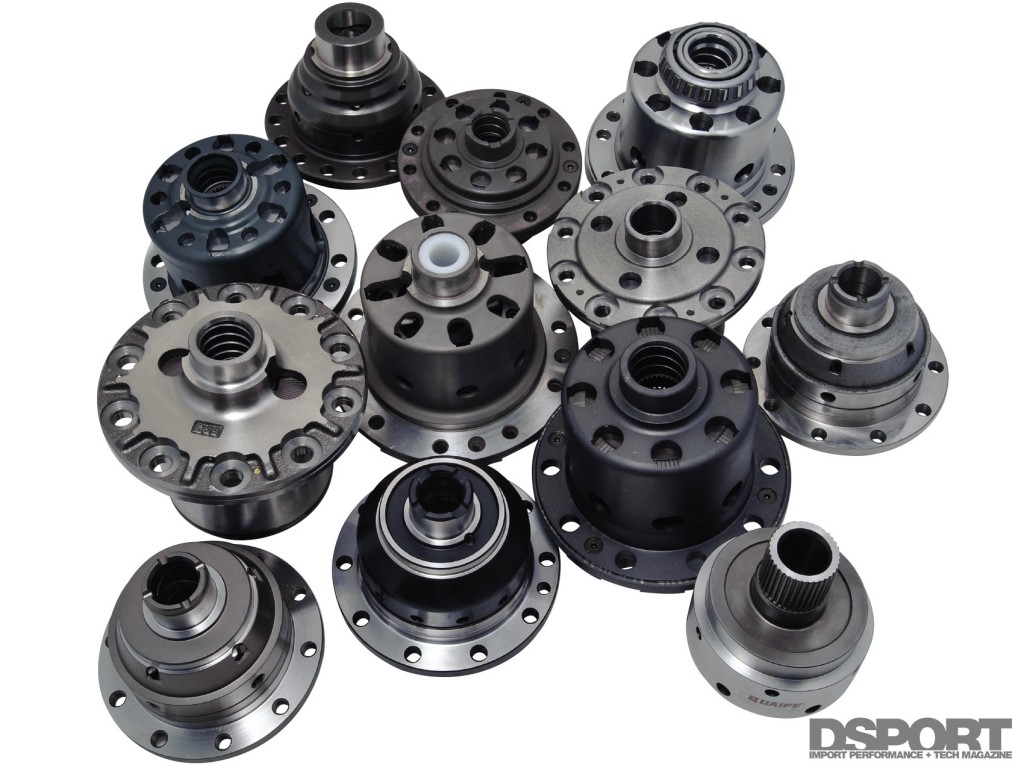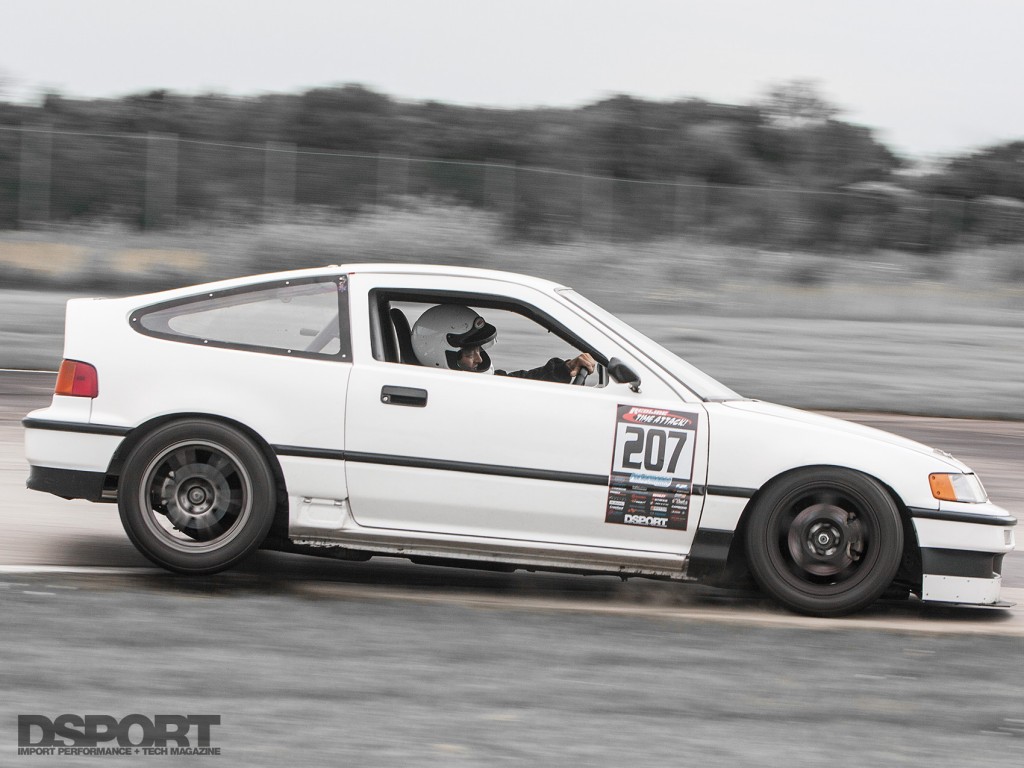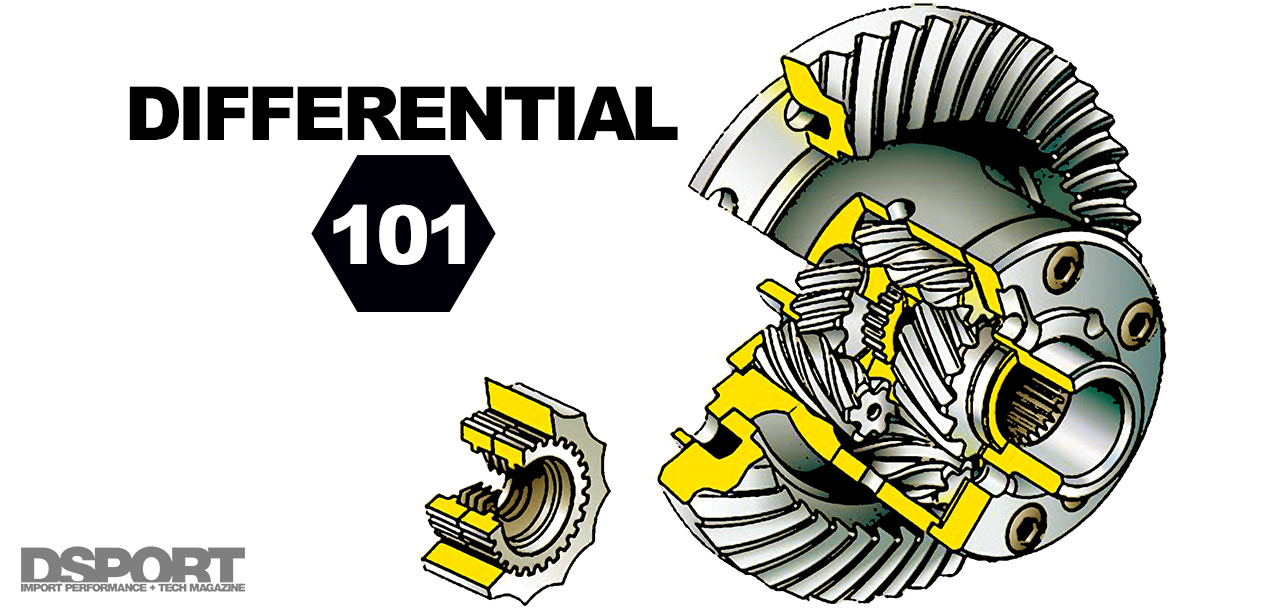Limited-Slip Differential (LSD)
What if a differential could be designed to work in both an “open” configuration and a “locked” configuration? This was the goal behind the development of the limited-slip differentials. Before we explore the inner workings of the various types of limited-slip differentials in existence, let’s first understand the basic function and operation of the LSD in both a straight-line and cornering situation.
As the name implies, the purpose of the limited-slip differential is to limit or control the amount of slip allowed in the differential. For maximum straight-line acceleration, an “ideal” LSD would allow zero slip between the left and right drive wheels. This would cause both drive wheels to equally propel the vehicle forward. Instead of power transfer to a single tire’s contact patch from an “open” differential, a properly-functioning LSD would transfer power to two tires to double the contact patch for maximum traction and acceleration. In a straight line, the LSD helps a vehicle deliver better acceleration times.
When attacking a corner at speed, a well-designed LSD would also prove to be beneficial. In this situation, the LSD would neither provide a full-lock nor a full-open situation. Instead, the LSD would seek to bias additional power to the outside wheel. This, in turn, would reduce inner wheel spin and allow the driver to begin accelerating out of the turn sooner. In an FR vehicle, changing over from an open to LSD rear differential will reduce understeer, providing a vehicle that is more neutral in the corners.
Factory vs. Aftermarket
For some platforms, you may find that the OEM offers an LSD as an option or even as standard equipment. While OEM LSDs have the same function as aftermarket LSDs, they are designed with stock power outputs in mind. As a result, the construction of OEM differentials is in many cases significantly weaker than aftermarket models. These differences can often be seen in the number of spider gears or the number and size of the clutch plates used within the OEM LSD. Hence, if you are considering the swap of your open-differential to a limited-slip differential, it’s worth the additional cost to use an aftermarket unit if you are planning to make more than stock-level horsepower.
A Better Mousetrap
Many different limited-slip designs are currently employed in both production and aftermarket LSDs. Cone and clutch type limited-slip differentials have been popular from the dawn of the performance era. Gear type and viscous-type LSDs are newer to the performance arena, but have proven to have merit. To say that one particular design is superior to another is not just. In reality, each design has its own merits. The focus of a performance enthusiast should be to select the best LSD to accomplish their specific performance goals. The following four questions should help to select the best LSD for your application.
Four Questions:
1. Availability: What are the aftermarket and factory options? Is there an optional transmission or rearend that’s available for my application?
2. Durability: Does the LSD need to handle additional power? If so, how much additional power?
3. Performance: Will the intended use be daily street driving, drag racing, road racing or a combination of different types of use?
4. Price: Are any of the options in my budget?
Cone, Clutch, Gear and Viscous
Independent of their actual design, all limited-slip-differentials are meant to function in the same basic way. The LSD should limit-slip when the proper conditions are met. You want the LSD to function like an open differential when you coast around a tight corner and you want it to act like a fully-locked spool when the gas pedal gets lost in the floor mat. A number of LSDs are torque biased or torque sensing so that they limit the slip under acceleration. Regardless of the type of LSD selected, the reality is that the driving difference between an open and limited-slip-differential vehicle will differ when the vehicle is pushed to the limits.
The driving difference between an open and limited-slip-differential vehicle will differ when the vehicle is pushed to the limits.


